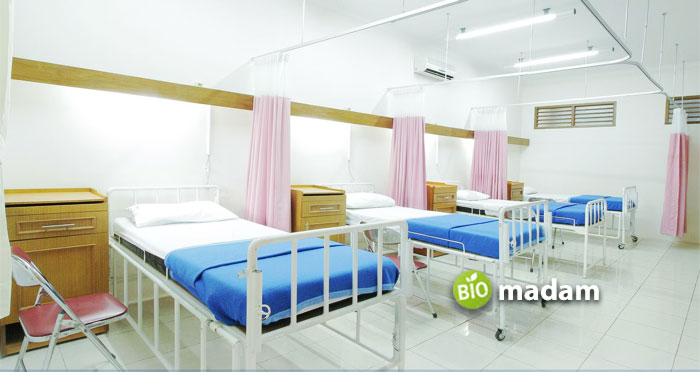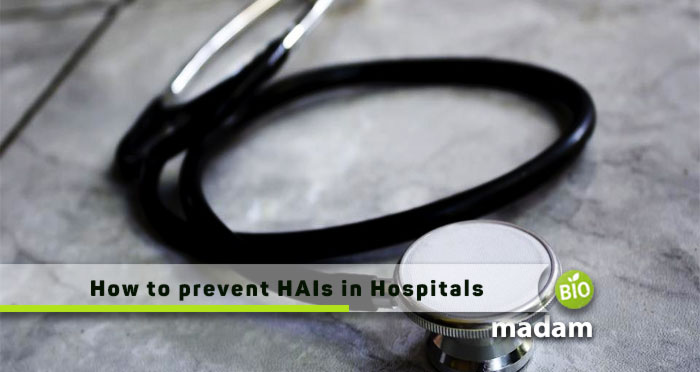Hospitals are places where people go to receive medical treatment and care. However, hospitals can also be breeding grounds for harmful bacteria and other pathogens. These pathogens can cause infections, which are known as healthcare-associated infections (HAIs). HAIs are a serious problem in hospitals and can have a significant impact on patients’ health. In fact, HAIs are one of the leading causes of death in hospitals worldwide. There are many different types of HAIs, but some of the most common include:
Clostridioides Difficile
Clostridioides Difficile, or C.Diff, is a type of bacteria that can cause severe diarrhea and other intestinal problems. It is most commonly spread in healthcare settings, such as hospitals and nursing homes. One of the most important things you can do to prevent the spread of C.Diff is to practice good hand hygiene. This means washing your hands with soap and water or using an alcohol-based hand sanitizer, before and after coming into contact with patients or contaminated surfaces. Other ways in preventing the spread of C.Diff include avoiding sharing items such as towels and linens, and wearing gloves when handling contaminated items. It’s also important to clean and disinfect surfaces that may be contaminated with C.Diff bacteria. If you or someone you know has symptoms of C.Diff, it’s important to seek medical treatment right away to avoid the spread of the infection. Symptoms of C.Diff include watery diarrhea, abdominal pain, and fever.
Bloodstream Infections
BSIs are a serious type of infection that can occur when bacteria or other such parasites enter the bloodstream. BSIs are a leading cause of healthcare-associated infections (HAIs). According to the Centers for Disease Control and Prevention (CDC), there are an estimated 648,000 BSIs each year in the United States. Of these, about 75,000 patients die as a result of their infection. They are often caused by catheters or other medical devices that are inserted into the body. BSIs can also be caused by infections at other sites in the body, such as the lungs, skin, or urinary tract. The most common types of bacteria that cause BSIs are Staphylococcus aureus (also known as MRSA), Escherichia coli, Klebsiella pneumonia, and Pseudomonas aeruginosa. These bacteria can enter the bloodstream through breaks in the skin or by coming into contact with contaminated medical devices.

The most effective way to prevent the spread of BSIs is to practice proper hand hygiene. This means washing your hands with soap and water or using an alcohol-based hand sanitizer before and after contact with patients. It is also important to clean any medical equipment that comes into contact with the patient’s blood or body fluids. Finally, it is important to follow the manufacturer’s instructions for using and caring for any medical devices. By taking these simple steps, you can help prevent the spread of BSIs.
Urinary Tract Infections
UTIs are one of the most common types of infections in hospitals. They are usually caused by bacteria that enter the urinary tract through the urethra and multiply in the bladder. UTIs can also occur when bacteria from other parts of the body, such as the skin, spread to the urinary tract. Most UTIs are not serious and can be treated with antibiotics. However, some UTIs can lead to more serious problems, such as kidney infections. There are several ways to prevent the spread of UTIs in hospitals. One way is to practice good hygiene, such as washing your hands regularly and urinating after sex. Another way is to use a urinary catheter only when necessary and to clean it according to the manufacturer’s instructions. Finally, it is important to drink plenty of fluids to flush out the bacteria from the urinary tract. Infection control practices, such as using barrier methods, such as condoms, during sex and avoiding sharing towels or other personal items, can also help prevent the spread of UTIs.
Surgical Site Infections (SSIs)
The most common type of HAI is a surgical site infection (SSI). SSIs are among the most preventable of all hospital-acquired infections. They occur when bacteria enter the body through an incision made during surgery. These infections can cause serious complications and, in some cases, be deadly. There are several ways to prevent the spread of SSIs. First, it is important to practice good hand hygiene. This means thoroughly washing your hands with soap and water or using an alcohol-based hand sanitizer before and after each patient contact. Second, it is important to cleanse the patient’s skin prior to surgery. This can be done with an antiseptic solution such as chlorhexidine or povidone-iodine. Third, it is important to use sterile techniques when performing surgery. This means using sterile instruments, drapes, and gowns. Finally, it is important to monitor the patient’s wound closely after surgery. If any signs of infection develop, they should be treated immediately.
Catheter-Associated Urinary Tract Infections (CAUTIs)
Another common type of HAI is a catheter-associated urinary tract infection (CAUTI) which is, as the name suggests, an infection that occurs when a catheter is present in the urinary tract. The most common symptom of CAUTI is a burning sensation when urinating, but other symptoms may include fever, chills, and cloudy or bloody urine. CAUTIs are often caused by bacteria entering the urinary tract through the catheter, and they can be very serious if left untreated. There are a few things that can be done to prevent CAUTIs, including using sterile techniques when inserting catheters, regularly cleaning the skin around the catheter site, and preventing constipation (which can cause bacteria to enter the urinary tract).
Ventilator-Associated Pneumonia (VAPs)

Ventilator-Associated Pneumonia (VAPs) is a type of healthcare-associated infection (HAI). They occur when patients breathing with the help of mechanical ventilation develop pneumonia. VAP is a serious complication associated with mechanical ventilation, and can often lead to death. The most common cause of VAP is the use of ventilator tubing that has become contaminated with bacteria. Other risk factors for VAP include a history of smoking, immobile, and having a weakened immune system. VAP can be prevented by using sterile techniques when inserting ventilator tubing, and by regularly changing the tubing. Patients should also be turned frequently to prevent the pooling of secretions in both lungs. In addition, antibiotics should be given to patients at risk for VAP as soon as possible after they are placed on mechanical ventilation.
The most important thing you can do to prevent the spread of HAIs is to practice good hand hygiene. This means thoroughly washing your hands with soap and water or using an alcohol-based hand sanitizer before and after each patient contact. You should also cleanse the patient’s skin prior to surgery and use sterile techniques when performing surgery.

Hi, they call me Jenna, and I am also known for achieving a gold medal during my Ph.D. in science life. I always had a dream to educate people through my utmost writing hobby. So, I chose this blogging path, and Biomadam gave me this opportunity to present for them. I now stand to entertain you. Continue reading my articles & discuss if you’ve any confusion through the comment section below.

